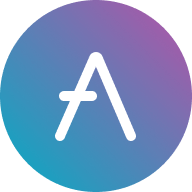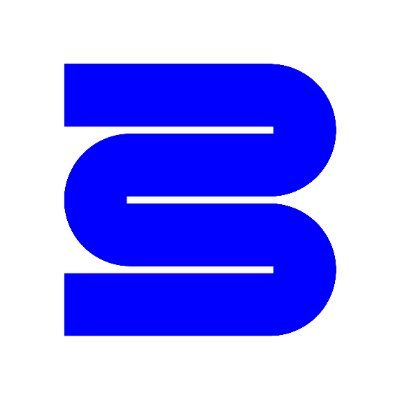AAVE price
in EUR

About AAVE
Disclaimer
OKX does not provide investment or asset recommendations. You should carefully consider whether trading or holding digital assets is suitable for you in light of your financial condition. Please consult your legal/tax/investment professional for questions about your specific circumstances. For further details, please refer to our Terms of Use and Risk Warning. By using the third-party website ("TPW"), you accept that any use of the TPW will be subject to and governed by the terms of the TPW. Unless expressly stated in writing, OKX and its affiliates (“OKX”) are not in any way associated with the owner or operator of the TPW. You agree that OKX is not responsible or liable for any loss, damage and any other consequences arising from your use of the TPW. Please be aware that using a TPW may result in a loss or diminution of your assets. Product may not be available in all jurisdictions.
AAVE’s price performance
AAVE in the news
The largest decentralized lending protocol processed $180 million collateral liquidation within an hour on Friday, proving its resilience, founder Stani Kulechov said.
High-volume selling drove the DeFi bluechip token below critical technical thresholds.
Aave (AAVE) was also a top performer, gaining 1% from Tuesday.
Aave (AAVE) was also an underperformer, declining 3.1% from Monday.
Protocols are trying to make token design matter again and are actively routing value back to holders.
The native token of the largest DeFi lending protocol is showing strong momentum despite short-term profit taking above $290.
AAVE on socials
Guides

AAVE on OKX Learn
AAVE FAQ
AAVE is a decentralized crypto lending platform that facilitates the borrowing and lending of digital assets. AAVE automates the lending process using smart contracts, making it efficient and secure. The protocol focuses on overcollateralized loans, where borrowers must deposit more crypto assets as collateral than the amount they wish to borrow.
AAVE differs from Compound (COMP) in several ways. AAVE provides flash loans, enabling consumers to borrow assets without security for a brief duration. On the other hand, COMP does not provide flash loans. Additionally, AAVE offers a decentralized governance mechanism where token holders may vote on modifications to the platform.
Easily buy AAVE tokens on the OKX cryptocurrency platform. Available trading pairs in the OKX spot trading terminal include AAVE/BTC, AAVE/USDT, and AAVE/USDC. Users are also able to purchase AAVE with a choice of over 90 fiat currencies via the “Express buy” option.
You can also swap your existing cryptocurrencies, such as XRP (XRP), Cardano (ADA), Solana (SOL), and Chainlink (LINK), for AAVE with zero fees and no price slippage by simply using OKX Convert.
To view the estimated real-time conversion prices between fiat currencies, such as the USD, EUR, GBP, and others, into AAVE, visit the OKX Crypto Converter Calculator. OKX's high-liquidity crypto exchange ensures the best prices for your crypto purchases.
Dive deeper into AAVE
The AAVE team introduced the AAVE Protocol to the market in 2020, marking a significant milestone as it enabled users to leverage actual cash on the platform. Before this, the idea of borrowing and lending cryptocurrencies appeared unconventional. Since its inception, the AAVE protocol has revolutionized the decentralized finance (DeFi) ecosystem. AAVE is one of the most renowned lending protocols within the DeFi space. But what precisely is the AAVE protocol, and what factors contributed to its widespread acclaim?
What is AAVE?
AAVE, formerly known as ETHLend, is a prominent decentralized money market protocol that facilitates the lending and borrowing of crypto assets. The protocol operates through a native token called AAVE, which serves as a governance token, empowering the community to shape the protocol's trajectory collectively.
Within the AAVE protocol, lenders can generate income by supplying liquidity to the market, while borrowers can collateralize their crypto assets to secure loans from the available liquidity pools. AAVE supports decentralized and non-custodial lending, allowing users to earn interest on their holdings and borrow various crypto assets. The protocol operates fully decentralized and incorporates a governance mechanism that relies on the AAVE token.
The AAVE Team
AAVE was initially founded in 2017 by Stani Kulechov under the name ETHLend. Kulechov's original vision was to create a platform that connected borrowers with lenders in a peer-to-peer (P2P) fashion. However, faced with various challenges, Kulechov shifted the approach to a peer-to-contract model, ultimately transforming ETHLend into AAVE.
How does AAVE work?
AAVE allows users to deposit their assets into a liquidity pool, earning interest in proportion to their contributions. Individuals can obtain a loan by providing collateral as an asset on the borrowing side. If the loan cannot be repaid, the protocol can liquidate the collateral to cover the outstanding debt.
Collateralized loans
Collateralized loans AAVE offers overcollateralized loans, requiring borrowers to deposit crypto assets worth more than the amount they wish to borrow. This ensures lenders are protected from potential loan defaults and allows the AAVE protocol to liquidate the collateral if its value significantly declines.
Flash loans
The AAVE protocol also enables flash loans, allowing users to borrow any amount of money from the protocol's capital without providing collateral. However, it is essential to note that the loan must be repaid almost immediately within the same transaction block.
AAVE’s native token: AAVE
When you deposit funds into AAVE, you receive an equivalent amount of tokens. These tokens are crucial to the network as they allow you to earn interest through lending activities.
Tokenomics
The AAVE ecosystem consists of a total of 16 million AAVE tokens, with 14.393 million tokens currently in circulation. It's important to note that 3 million tokens from the total supply are allocated to the founding team. These tokens play a significant role in supporting the development and growth of the AAVE protocol.
AAVE use cases
AAVE has multiple use cases within the DeFi protocol. Firstly, it is widely used for staking and governance, allowing token holders to participate actively in the decision-making process and contribute to the development of the protocol.
Additionally, AAVE plays a crucial role in facilitating lending and borrowing services offered by the protocol. Users can borrow funds against their collateral, participate in collateral swaps, and even utilize flash loans for quick and efficient transactions.
AAVE Distribution
The distribution of AAVE tokens is as follows:
- 30 percent of the tokens were set aside for the core development of the DeFi protocol.
- 20 percent of the tokens were allocated for developing a user-friendly interface, ensuring a smooth user experience.
- 20 percent of the tokens were allocated for management and legal costs of maintaining the protocol.
- 20 percent of the tokens were used for promotions and marketing activities to increase awareness and adoption.
- 10 percent of the tokens are reserved for covering overhead costs related to the operation of the AAVE ecosystem.
What the future holds for AAVE
The future looks promising for AAVE and its token holders, as the protocol has set ambitious goals for its ecosystem. With a clear vision and strategic plans, AAVE is poised to maintain its position as a leading protocol for borrowing and lending in the crypto industry.
However, it is important to note that the rapidly evolving crypto ecosystem regularly introduces new innovations and competition. The AAVE team must stay agile and prepared to navigate the challenges posed by emerging projects to sustain their success.
ESG Disclosure









